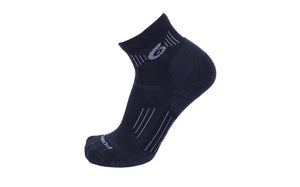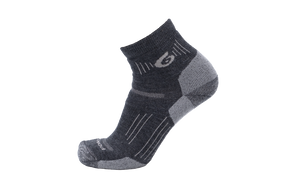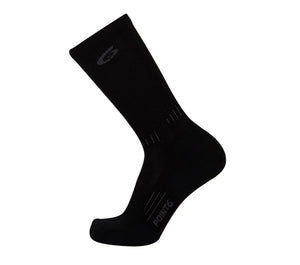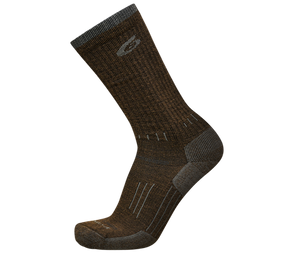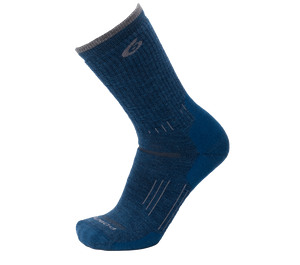A Quick Guide on What to Pack and How to Pack It

This article is the second of a three part series on preparing for a backpacking trip.
by John Huston
Point6 ambassador John Huston is a professional polar explorer and outdoor educator. He started his career as an instructor at theVoyageur Outward Bound School in Ely, MN. John has led wilderness expeditions for over 20 years and has been the supervisor of Northwestern University’s new student backpacking program.
What to pack and how to pack it, can be a stressful part of backpacking trips. During a busy expedition season sometimes I feel like all I do is pack, unpack, and repack. It can take on ridiculous scales – like a 26-foot UHaul truck jammed to the gills with 100 days of Arctic-bound dog sled expedition supplies – but when it comes to my personal life I hate packing. Too often I leave it to the last minute.
I’ll never forget in 2012 when I led a polar expedition training for a team from the Canadian military. The evening before hitting the ice we were all at the pub, The other course leader and I left early to finish packing. The next morning the guys were making fun of us, for leaving early, but also for doing things out of order. “We never go to the bar until we are fully packed,” one said. “That way no matter what happens, the next morning all we have to do is grab our bags and go.”
It was a good lesson: sort and pack your kit well ahead of time, because things can get messy right before departure.
What to pack will vary some depending on the length of the trip, season, and location. Putting together a packing list can provide a great framework. It can also help in resisting the urge to overpack and bring insurance items.
Below is a condensed version of my standard backpacking equipment and clothing list. It is adapted from the weeklong new student backpacking program at Northwestern University that I used to oversee. So it will be less focused on lightweight/minimalist choices compared to a thru-hiker packing list. In places I’ve included some of my favorite specific pieces of gear and notes to help narrow down the choices.
The price tag to outfitting yourself for a backpacking trip, especially if a person is just starting out, can be steep, but it doesn’t have to be. Likewise, learning about equipment and developing your preferences can be overwhelming. Borrowing and renting equipment is a good way to learn about different tents and other items. I think it’s wise to focus your time and money on the essential gear that will make you comfortable on trail: boots, backpack, and sleeping system.
Here are the ABCD’S of packing a backpack, adapted from the Voyageur Outward Bound School where I worked in the early 2000s.
Access. Keep items you’ll need throughout the day easily accessible and handy. Compass, maps, lunch, rain gear, warm layer, sunscreen, camera, water purification, water, etc… Use your pack lid and exterior pockets.
Balance. Place heaviest items in the lumbar (mid-lower) spine area, not too high or too low. Balance the pack side-to-side.
Compactness. Minimize air spaces and fill nooks. Sometimes you can save space by not keeping items compartmentalized in stuff sacks. Stuff larger clothing items into cracks/openings. Folding an inflatable sleeping pad and stowing it inside a pack can be more space effective and more puncture-proof than rolling it into a stuff sack and strapping it outside the pack. Same with tents, they can pack a lot better pulled out of their stuff sack and crammed into spaces in the pack.
Danger/Dry. Ensure that the load is not too heavy. Dangling items could be a hazard or come loose, batten them down, and tuck away loose rope, etc... Keep food away from, and above, fuel. Try to store fuel upright in the outer pockets. Keep essential gear dry, especially sleeping bags, warm layers, cameras, etc.. A contractor grade trash bag makes a good waterproof pack liner. A kitchen trash bag can be used to line the sleeping bag stuff sack.
Streamlined. Ideally the pack should have no bulges or voids and have a smooth exterior.
After the first few days of a trip, my packing system always improves. There is a little less food competing for space, but mainly the repetitions and routines on trail lead to little changes to make things more compact and accessible. Jotting down notes while on trail about what to pack and how to pack can help the process the next time out. Packing takes patience, but it pays off with a manageable well-organized pack.
Backpacking Packing List– Late Summer, 2-Week Expedition Style
FOOTWEAR
- Hiking Boots/Shoes: lightweight hiking boots or approach shoes can be a good option
- Merino Wool Socks: Point6 37.5 Hiking Essential Light Crew, Point6 37.5 Hiking Essential Medium Crew
- Closed Toed Camp Shoes: running shoes, can also be used for hiking if needed
UPPER BODY
- T-shirt: lightweight merino wool is my favorite, 2 can be nice for longer trips
- Merino Wool Midweight Base Layer: Point6 Base Layer Long Sleeve Mid 1/4 Zip Top
- Insulating Tops: wool, fleece, synthetic or down, 2 layers if it will be cold
- Waterproof Jacket: avoid water resistant which are not waterproof
- Gloves or Mittens: lightweight for cold nights and mornings
- Wool Hat: should be comfortable for sleeping
- Sun Hat or Baseball Hat
- Sunglasses: side protection helps, I’ve always used Oakley
LOWER BODY
- Shorts & Hiking Pants: quick drying, pockets are useful
- Merino Wool Midweight Base Layer: Point6 Base Layer Midweight Bottoms
- Waterproof Rain Pants: often skipped, but are essential in bad weather
- Underwear
BACKPACK, SLEEPING SYSTEM, SHELTER
- Backpack: Mystery Ranch Terraplane or Mystery Ranch Glacier
- Sleeping Pad: Therm-a-rest NeoAir XTherm Sleeping Pad or Therm-a-rest Ridgerest
- 15° Sleeping Bag: down packs the best, but needs to be packed waterproof
- Tent or Tarp Shelter
- Tent Ground Sheet
- Utility Tarp: very useful in the rain
- Lightweight Utility Rope: used for guying out tarp, extending tent guy lines, etc...
KITCHEN
- Stove: MSR Whisperlite Universal or MSR Reactor
- Fuel Bottles, Lighter
- Pots: MSR Flex, Alpinist, or Quick System
- Bowl, Spoon, Mug, Wooden Spoon, MSR Alpine Spoon for serving
- Food. Spice Kit. Oil. See next week’s post on backpacking food.
- Multitool: Victorinox SwissTool Spirit
- Bear Bag: rope (7-8 mil or so), stuff sack waterproofed, pulley if a lot weight, carabiner
- Water Purification, Water Bottles, Biodegradable Soap or Hand Sanitizer,
MISC, NAVIGATION, PERSONAL ITEMS
- Stuff Sacks, Zip Lock Bags
- Map, Compass, GPS/Satellite Communicator, Whistle
- First Aid Kit: cuts, scrapes, blisters, ibuprofen, acetaminophen, benadryl, etc…
- Headlamp, Bandana, Journal, Pen/Pencil, Duct Tape, Sewing Kit
- Toothbrush, Toothpaste, Sunscreen, Small Pack Towel
- Personal Medications & Female Hygiene Supplies


